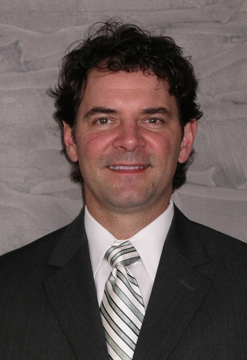The Medicare pilot program for risk-sharing among orthopedic and spine surgeons is scheduled to begin January 2015. Participants are already signed up for the Medicare Bundled Payment Care Initiative, which provides surgeons with data about their costs to decide whether they want to assume the risk for bundled payments.
Surgeons can either interact with hospitals to manage the bundle or collaborate with an outside company to determine prices and risk. Companies like Remedy or Episode Solutions are specifically equipped with the expertise in data analysis to determine what bundles are best for each individual surgeon.
Beyond the Medicare bundles, some providers are entering into risk-sharing agreements with payers, which is more difficult to manage. Medicare data for all providers is published in the federal registry; no such transparency is available from most commercial payers, which is a challenge, but the tide is beginning to change.

Another opportunity to partner for bundled payments is large employers. "We entered into a spine bundle for a single employer contract," says Daniel Murrey, MD, CEO of OrthoCarolina in Charlotte, N.C. "It's currently relatively small but  we are using it as a place to start and grow from there. Ultimately, most of the procedures we do are going to be paid for in some risk-bearing framework — likely bundled payment — going forward. It will likely be as a subset of population health."
we are using it as a place to start and grow from there. Ultimately, most of the procedures we do are going to be paid for in some risk-bearing framework — likely bundled payment — going forward. It will likely be as a subset of population health."
Surgeons stand to gain several advantages from bundled payments:
• Cost savings that help make spine care more sustainable and are good for their practice's bottom line.
• Data to achieve the best clinical outcomes for their patients.
• Better coordinated care with other spine specialists and the patient's primary care physician.
• Strong relationships with payers and the opportunity to stay independent.
• Leadership as healthcare transitions from fee-for-service to pay-for-performance.
However, there are things surgeons stand to lose as well:
• Profits, if the bundle isn't priced correctly or if there are complications.
• Quality of care if the bundle pays too much attention to cutting costs.
• Patients, if they are unable to treat them outside of the bundle.
Current spine care is often distributed by several providers without a single person in charge of the patient's outcome. Providers who take on bundled payments must control all aspects of care to reduce variation and minimize risk. This also reduces the number of repeat tests and studies done for the patient to make care more efficient.
"The biggest roadblock we have right now is spine care frequently isn't given all under the same roof and patients don't have a single plan; they go from one provider to the next," says Dr. Murrey. "If you could take them through the evidence-based protocol, they would have less expensive and more effective care. The challenge is we are still largely in a fee-for-service world that doesn't promote rationing resources and limiting care to what has been proven."
But there is a model for success in orthopedics for joint replacement bundled payments. One well-known example of orthopedic bundled payments occurred in California with the CalPERS program for joint replacements. "They were able to achieve a meaningful savings in terms of their episodes of care," says Dr. Slosar. Other examples of successful bundled payments for joint replacements are evident around the country, but there aren't as many programs for spinal procedures.
"In general, spine surgeons are busy with clinical responsibilities and there isn't an easy resource for information on them," says Dr. Slosar. "The professional societies are trying, but they are also just learning the process for themselves. On the other hand, commercial payers are very sophisticated and have extensive actuarial capacity with which to figure out risk. Even hospitals would have a difficult time assessing financial risk from a business perspective, so individual doctors are even less capable."
If individual spine surgeons decide to control a bundled payment, Dr. Slosar provided a few tips to smartly assume risk:
• Partner with a firm that has experience with the Medicare BPCI program. This will be the proving ground for the early physician and risk sharing adopters..
• Have the data available to show which patients should be included in the bundle and the actual costs for surgery. The most important data points include:
o Complication rates
o Readmission rate
o Pain score improvement
o Functional status
• The greater the risk, the greater the potential is for financial gain or loss. Consider purchasing insurance policies against the loss.
"Surgeons who wish to participate in bundled payments must understand that if you want a financial reward for saving money, you also must assume some financial risk," says Dr. Slosar. "Ideally, you would like a term of your agreement to assume risk, if you can save money for the insurance company. Some of that savings should also go to the patient by a reduced deductible or similar idea."
There are some surgeons already focused on developing protocol for back pain patients focused on managing the total episode of care.
"One of the innovations more people are contemplating is a medical back pain screening process and treatment protocols to put in place before going at risk to manage those patients," says Dr. Murrey. "We are going to see more of that over time. We are already seeing bundled payment contracts being negotiated for fixing the total cost of spinal fusion and laminectomy."
The focus on bundled payments could bring discrepancies in quality and cost of care to light that will reduce current issues with failed outcomes and high prices associated with many fusion procedures. "There are some people who feel a 'more is better' approach is best, but I think there will be greater evidence that a different approach is necessary," says Dr. Murrey. "Right now there are dozens of ways to fuse a vertebral segment, some are expensive and some are inexpensive depending on the number of implants and amount of biologics used."
Demand-matching is an important concept in joint replacement and now is becoming more common in spine as well. Spine surgeons will begin to question:
• Does the patient need anterior and posterior approaches?
• Do they need instrumentation? How much?
• Are the risk factors justified for the procedure?
• Can the hospital length of stay and recovery period be reduced?
• Are the implant costs appropriate?
"People are using joint replacements as an area to experiment and learn how to frame the risk proposition and define the episode of care," says Dr. Murrey. "Spine has more variation than the indications for joint replacement, and the patient population is more varied. This makes it harder to package the spine bundle. A lot of people are trying to figure it out, but we haven't seen a lot of them come to fruition."
Participation in these types of programs is regional; in some markets, shared savings, ACOs and bundled payments are a few years old while major players in other markets wouldn't dream of assuming risk. However, it often depends on whether the hospitals or health systems in a certain market are participating and what relationship other providers have with insurance companies.
"Surgeons may be invited to participate at the hospital-level when insurance companies are working with the hospitals, but I think inevitably [the independent model] seems to be the probable model that will emerge as a meaningful component of surgical delivery," says Dr. Slosar. "Bundled payments won't completely replace fee-for-service, but will be part of most practicing physicians' various reimbursement methods within the next three to five years."
The average independent surgeons are weary of partnering with hospitals; many have an adversarial relationship and are avoiding full-time employment at all costs. Independent surgeons often make the conscious choice not to join hospitals because they'd prefer to control their practice, and the same is true for bundled payment models.
"If surgeons have an opportunity to partner with a company like Episode Solutions to keep private practice surgeons in private practice, I think most surgeons would prefer to do this on their own with a business partner," says Dr. Slosar. "Nobody can predict what will happen in healthcare, but there is a significant amount of payer interest and physician interest in bundled payments, so this model will mature and surgeons will become more knowledgeable in the future."
The brave surgeons in the pack are already taking the leap, and Dr. Murrey says this is a good thing. The landscape is being paved for others to follow suit.
"You need to be willing to bet on yourself," he says. "Once you showed you have done better than average work, you need to take risk on that and enter into bundled payments where you can lower the cost of care with a more predictable outcome. Share risk with the patient and we'll be able to not only improve the coordination of care and outcomes but also lower costs."
The first step toward the future of population health is becoming more engaged with primary care physicians and other specialists. "We have heard conversation around ACOs and now population health, and as specialists we feel left out because we are more episodic and less disease management," says Dr. Murrey. "Bring both together to make care more effective and improve the appropriateness of utilization on the population health side while stimulating efficiency and better outcomes on the episode side. That's an important next step and where we'll be focused over the next five years."

